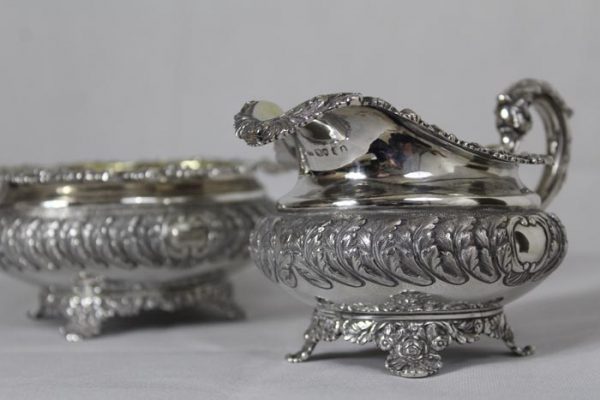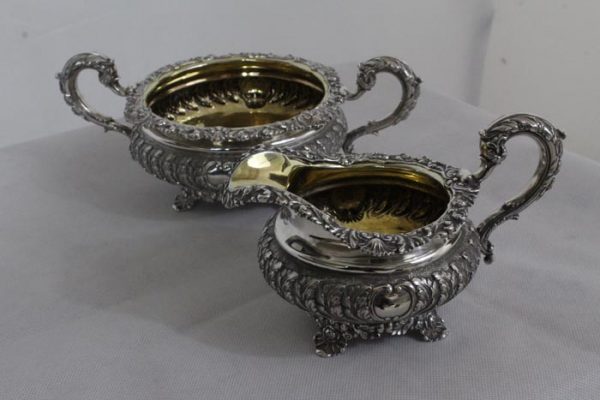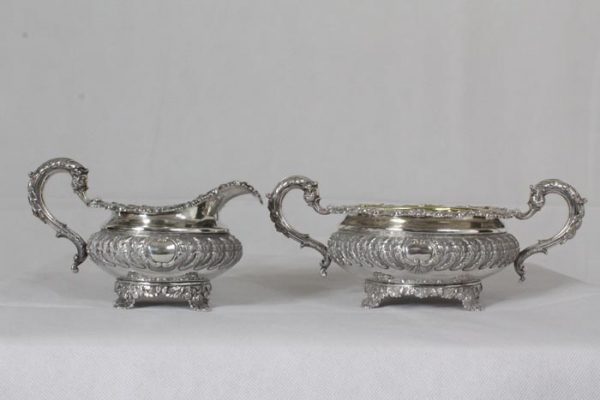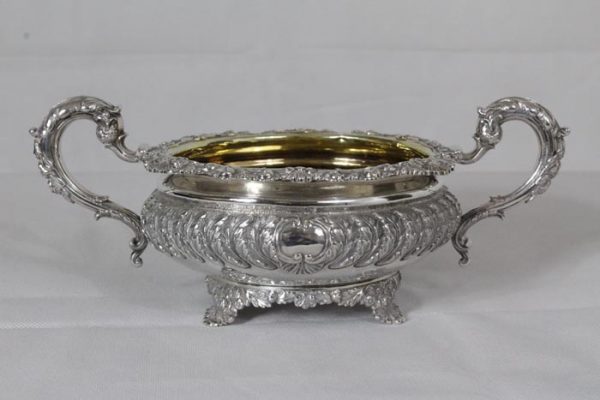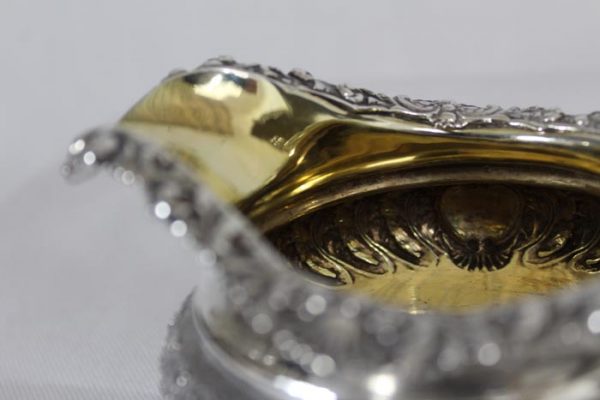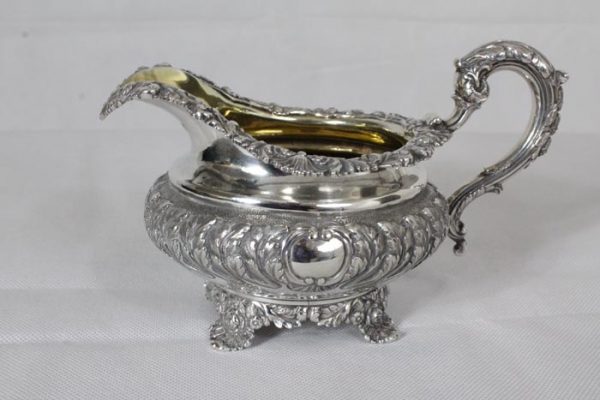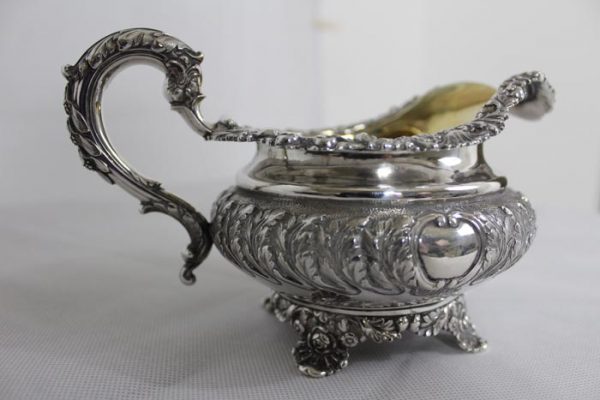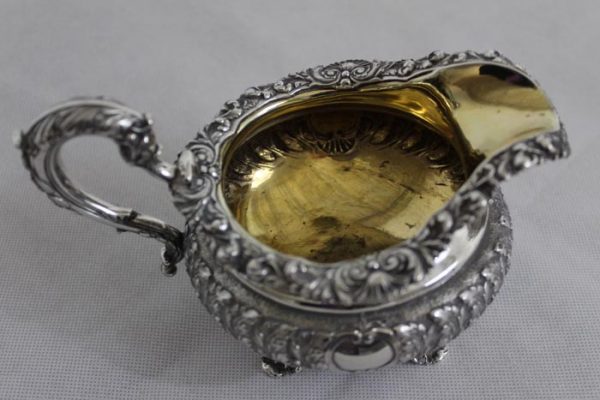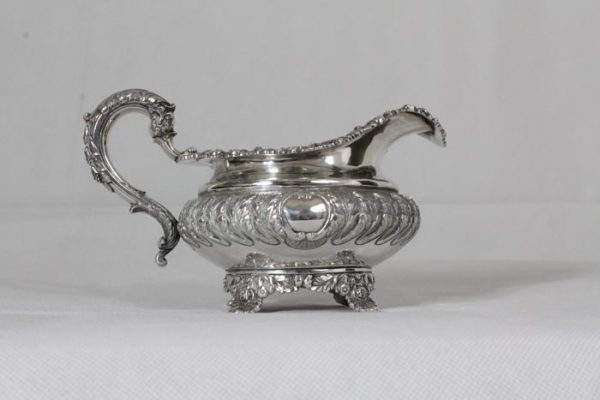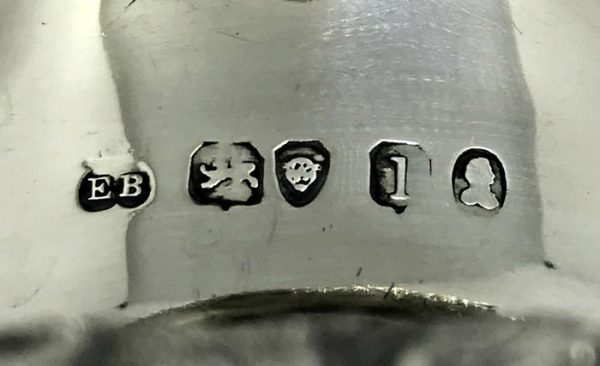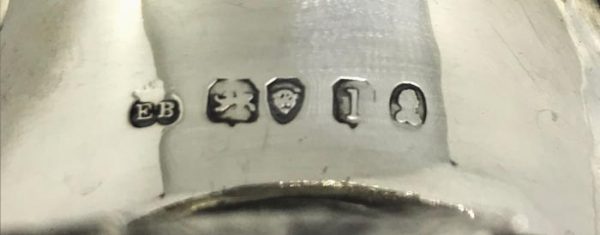My Store
Victorian English Silver Creamer Sugar Bowl Edward John Barnard 1826 Hallmarked
Victorian English Silver Creamer Sugar Bowl Edward John Barnard 1826 Hallmarked
Couldn't load pickup availability
A Fine Victorian English Silver Creamer & Sugar Bowl Made by Edward & John Barnard, 1826
An exquisite and museum-quality pair of Victorian English silver comprising a creamer and sugar bowl, crafted by the distinguished silversmiths Edward & John Barnard in 1826. This elegant set demonstrates the refined taste, exceptional craftsmanship, and technical mastery that characterized English silver during the Georgian and early Victorian periods. Fully hallmarked with London assay marks confirming the 1826 date and Barnard makers' marks, this set offers collectors authenticated examples of early 19th-century English silver by one of the period's most respected silversmithing firms.
Edward & John Barnard - Distinguished Silversmiths
Edward & John Barnard represent one of the most important names in English silversmithing history. The Barnard family's silversmithing dynasty began in the 18th century and continued through multiple generations, producing work of consistently high quality for aristocratic and wealthy clientele. Edward Barnard I (1767-1855) and his sons Edward Barnard II and John Barnard established the firm that bore their names, creating silver that combined traditional craftsmanship with evolving tastes. Their work is represented in major museum collections and remains highly sought after by collectors of English silver. The 1826 date places this set early in the firm's most productive period, when they were establishing their reputation for excellence.
1826 Dating - Georgian to Victorian Transition
The 1826 date places this set in the fascinating transitional period between the Georgian and Victorian eras. King George IV reigned from 1820-1830, and 1826 falls within the Regency aesthetic's final years before Victorian tastes began to emerge. Silver from this period often demonstrates the refined proportions, restrained decoration, and classical influences characteristic of late Georgian taste, while anticipating the more elaborate styles that would develop during Victoria's reign (1837-1901). This historical positioning makes the set particularly interesting to collectors of English decorative arts.
Creamer and Sugar Bowl - Essential Tea Service
The creamer (milk jug) and sugar bowl represent essential components of English tea service, reflecting the central importance of tea drinking in British social and domestic life. By the early 19th century, tea had evolved from luxury import to daily necessity across all social classes, with elaborate tea services becoming status symbols among the wealthy. The creamer and sugar bowl's forms, proportions, and decoration demonstrate the sophisticated design sensibilities applied even to utilitarian objects. These pieces would have been used daily in wealthy households or reserved for formal entertaining, depending on the family's circumstances.
Hallmarks - Authentication and Provenance
This set bears full London hallmarks including:
- Maker's Mark: Edward & John Barnard - confirming the distinguished makers
- Date Letter: 1826 - precisely dating the manufacture
- Assay Office Mark: London leopard's head - confirming London origin
- Standard Mark: Lion passant - confirming sterling silver (.925 purity)
- Duty Mark: Sovereign's head (if present) - indicating duty paid
These hallmarks provide complete authentication and provenance, essential for serious silver collecting. English hallmarking represents the world's oldest and most comprehensive system for guaranteeing precious metal purity and providing maker attribution. The presence of clear, legible hallmarks dramatically enhances both historical interest and market value.
Sterling Silver - Premium Material
Crafted in sterling silver (.925 purity - 92.5% pure silver, 7.5% copper alloy), this set demonstrates the quality standards maintained by English silversmiths and enforced by assay offices. Sterling silver provides the perfect balance between pure silver's beauty and the strength needed for functional objects. The silver has developed the warm patina that only nearly 200 years of careful use and preservation can create - a patina that cannot be artificially replicated and represents one of antique silver's most valued characteristics.
Design and Proportions
The creamer and sugar bowl demonstrate the refined proportions, elegant forms, and restrained decoration characteristic of late Georgian taste. The pieces likely feature classical influences - perhaps urn shapes, reeded borders, or other neoclassical elements popular during this period. The design balances aesthetic beauty with practical function, creating objects that work beautifully for their intended purpose while serving as decorative art. The proportions' harmony and the forms' elegance demonstrate why Georgian and early Victorian silver remains perennially popular among collectors and those furnishing traditional interiors.
Craftsmanship and Construction
These pieces demonstrate traditional silversmithing techniques - hand-raising from sheet silver, careful finishing, and precise attention to detail. Each piece was individually crafted by skilled silversmiths using techniques perfected over centuries. The weight, balance, and finish quality distinguish fine English silver from lesser work. The Barnard firm's reputation for quality ensures these pieces represent accomplished craftsmanship meeting exacting standards.
Condition and Preservation
For silver nearly 200 years old, condition is paramount. This set's survival with hallmarks intact and forms undamaged represents excellent preservation. Antique silver may show honest wear - small dents, scratches, or patina - that adds character and authenticity. Any significant condition issues, repairs, or alterations should be disclosed. The silver's current state affects both aesthetic appeal and investment value. Detailed condition reports available to serious collectors.
Investment Value and Collectibility
English hallmarked silver by documented makers like Edward & John Barnard represents solid investment opportunities. The combination of prestigious makers, clear 1826 dating, complete hallmarks, and the desirable creamer and sugar bowl form creates strong appeal among collectors of English silver, Georgian/Victorian decorative arts, and tea service enthusiasts. As authentic period silver becomes scarcer and appreciation for traditional craftsmanship grows, quality examples by known makers show consistent market performance.
Historical and Cultural Significance
This set embodies early 19th-century English domestic life, the central importance of tea drinking in British culture, and the sophisticated craftsmanship traditions that made English silver world-renowned. It represents the Barnard family's silversmithing legacy and the high standards maintained by London's Goldsmiths' Company through their hallmarking system. Owning such pieces means becoming custodian of this extraordinary cultural and craft heritage.
Versatility and Modern Use
While created for tea service, this set serves beautifully in modern homes for various purposes - actual cream and sugar service, decorative display, or as examples of fine English silver craftsmanship. The pieces' elegant forms and warm silver patina complement both traditional and contemporary interiors. Many collectors use antique silver for its original purpose, enjoying the connection to historical domestic practices while appreciating the pieces' beauty and quality.
Care and Maintenance
Antique silver requires appropriate care to maintain condition and value. Regular gentle cleaning with quality silver polish preserves appearance while protecting the metal. Avoid harsh chemicals or abrasive materials. Store in tarnish-preventive cloth or cases. Professional conservation assessment recommended for insurance documentation and to address any structural issues. With proper care, this set will continue to provide beauty and service for generations.
Collecting Context
This set appeals to collectors of English silver, Georgian/Victorian decorative arts, tea service items, and those seeking authenticated pieces by documented makers. It would enhance private collections, serve practical tea service needs, or provide authentic period furnishing for traditional interiors. The set's combination of beauty, utility, historical significance, and investment value makes it suitable for both serious collectors and those simply seeking quality antique silver.
Display and Use
The creamer and sugar bowl work beautifully displayed together on sideboards, tea tables, or in silver collections. They can serve their original purpose during tea service or stand as decorative objects showcasing English silversmithing excellence. The pieces' compact scale makes them suitable for various settings while their elegant forms create visual interest and historical connection.
Available for viewing by appointment at Artemisia Fine Arts & Antiques Ltd, Malta's premier gallery for English antique silver. We provide expert consultation, hallmark verification, authentication services, insurance valuation, and international shipping with specialized silver handlers. This fine Victorian set by Edward & John Barnard represents an exceptional acquisition opportunity for collectors of English silver. Serious inquiries welcome.
Share
